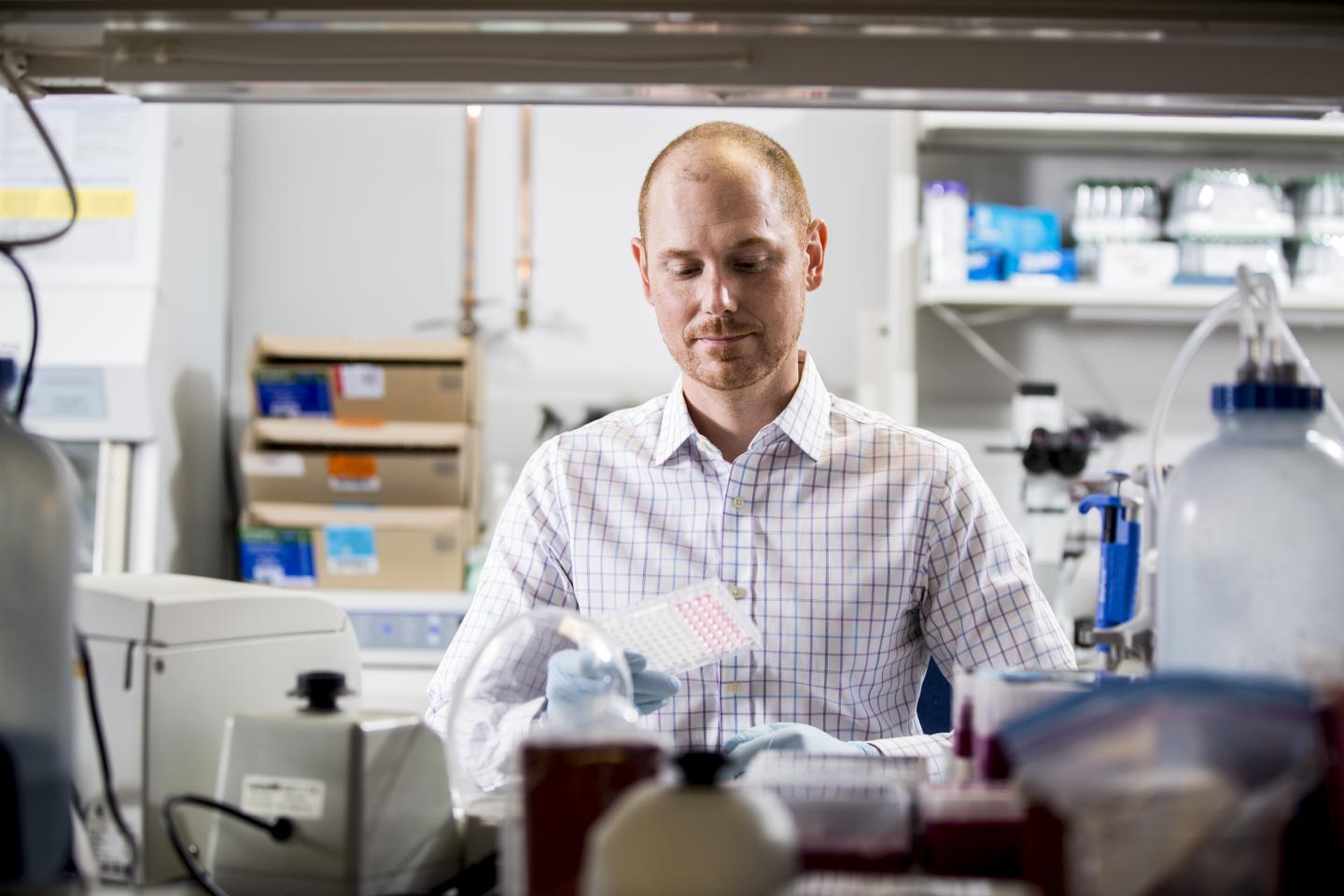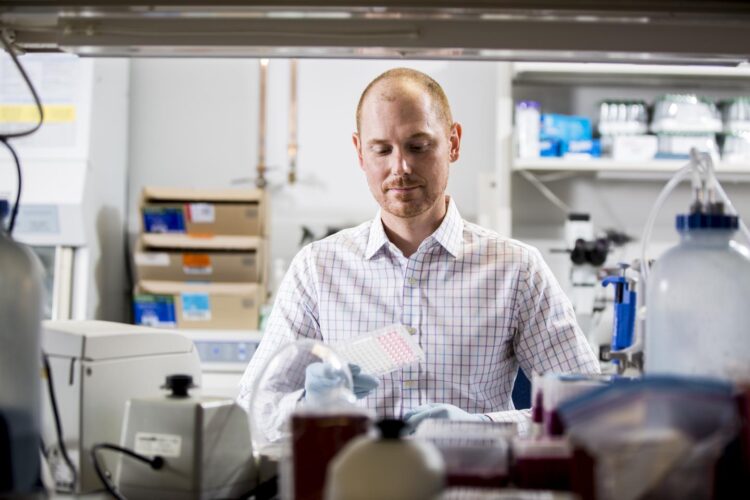
Credit: OU Medicine
OKLAHOMA CITY — By the time they turn 65, at least half of people suffer from osteoarthritis, a condition that impairs quality of life and cannot be slowed by medication.
Matlock Jeffries, M.D., an OU College of Medicine researcher and physician, recently received a $1.6 million grant from the National Institutes of Health to further his search for a biomarker that can aid in the early diagnosis of osteoarthritis and predict whether the condition will worsen quickly or slowly.
Many people view osteoarthritis as a “wear and tear” condition, but it is actually an inflammatory disease, Jeffries said. However, unlike other forms of arthritis, it cannot be diagnosed by a blood test, nor can anyone tell how quickly symptoms will worsen. By contrast, rheumatoid arthritis, which affects about 1% of the population, can be definitively diagnosed and treated by at least 20 disease-slowing biologic drugs.
“We need an earlier diagnostic test to help us determine whether a patient has osteoarthritis and, if they have early osteoarthritis, are they going to be among the one-third of people who will rapidly progress and need a joint replacement in the next couple of years? Or are they going to be part of the much larger group that is going to slowly worsen over time?” Jeffries said.
For this research project, Jeffries is focusing on osteoarthritis of the knee. His research is important not only because people need to be diagnosed earlier than they currently are, but his discoveries may significantly benefit the search for a treatment — which could be given before a person reaches the point of needing a knee replacement.
Although several drugs are being investigated, clinical trials are difficult to conduct because osteoarthritis doesn’t progress at the same rate in all people, Jeffries said. Some may come to the doctor with a lot of pain but no change in their X-rays, while others will have both pain and X-ray changes. Others will have pain but no X-ray changes for a decade. X-rays are effective for determining how much cartilage the knees have lost, but not for predicting how fast the disease will worsen, he said.
“Researchers have developed several drugs for osteoarthritis that need to be moved to clinical trials,” he said. “The problem is, if you can’t start the clinical trial with a group of patients you know are going to get worse relatively quickly, your trial is going to last for 20 years, which is far too long.”
That’s where Jeffries’ research niche serves a crucial purpose. His laboratory largely focuses on osteoarthritis and epigenetics, the study of how genes are turned off and on over a long period of time. Epigenetic changes are one of the earliest signs that a disease is changing its features. In a preliminary study, Jeffries found that epigenetic patterns differed between people with osteoarthritis whose condition progressed quickly vs. those whose condition progressed slowly.
“That study backed up our hypothesis that you see epigenetic changes first, then you see other signs of the disease,” he said. “It gives us a biomarker to predict how soon people will see a progression of their osteoarthritis,”
With his new grant, Jeffries will seek to confirm his findings in a much larger group of patients. If his research is successful, it will speed the search for an effective drug. Until that time, he would like the ability to tell his patients how quickly they can expect their condition to worsen.
Osteoarthritis in the No. 1 cause of disability in the United States, and it is rising as a disability cause in other parts of the world because people everywhere, as in the United States, are becoming more obese, Jeffries said.
“Many patients with osteoarthritis can’t walk anymore and they have a variety of other conditions, like hypertension and diabetes,” he said. “It’s a catch-22 for osteoarthritis patients because their diabetes and hypertension would get better if they could exercise and lose weight, but they can’t exercise and lose weight because they have osteoarthritis.”
###
OU COLLEGE OF MEDICINE
Founded in 1910, the University of Oklahoma College of Medicine trains the next generation of healthcare professionals. With campuses in Oklahoma City and Tulsa, the College of Medicine offers the state’s only Doctor of Medicine degree program and a nationally competitive Physician Assistant program. For more information, visit oumedicine.com/collegeofmedicine.
OU MEDICINE
OU Medicine — along with its academic partner, the University of Oklahoma Health Sciences Center — is the state’s only comprehensive academic health system of hospitals, clinics and centers of excellence. With 11,000 employees and more than 1,300 physicians and advanced practice providers, OU Medicine is home to Oklahoma’s largest physician network with a complete range of specialty care. OU Medicine serves Oklahoma and the region with the state’s only freestanding children’s hospital, the only National Cancer Institute-Designated Stephenson Cancer Center and Oklahoma’s flagship hospital, which serves as the state’s only Level 1 trauma center. OU Medicine is the No. 1 ranked hospital system in Oklahoma, and its oncology program at Stephenson Cancer Center and OU Medical Center ranked in the Top 50 in the nation, in the 2019-2020 rankings released by U.S. News & World Report. OU Medicine was also ranked by U.S. News & World Report as high performing in four specialties: Ophthalmology in partnership with Dean McGee Eye Institute, Colon Surgery, COPD and Congestive Heart Failure. OU Medicine’s mission is to lead healthcare in patient care, education and research. To learn more, visit oumedicine.com.
Media Contact
April Sandefer
[email protected]





